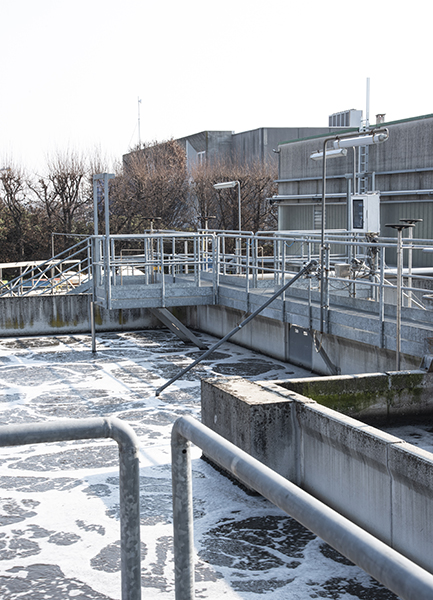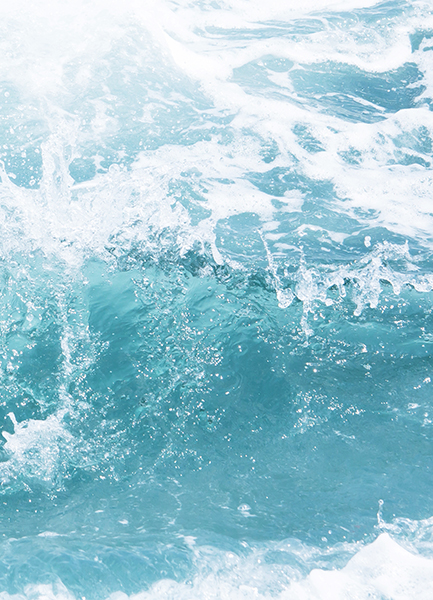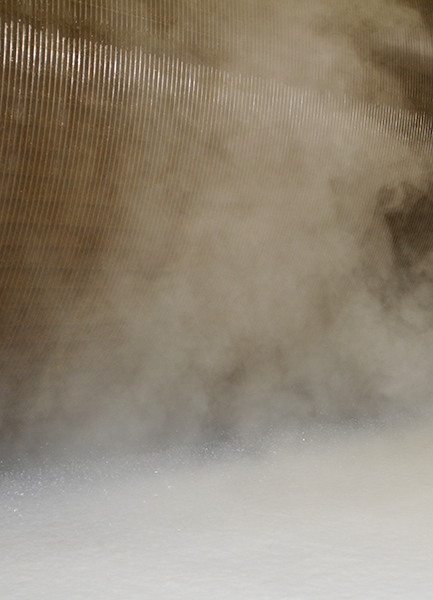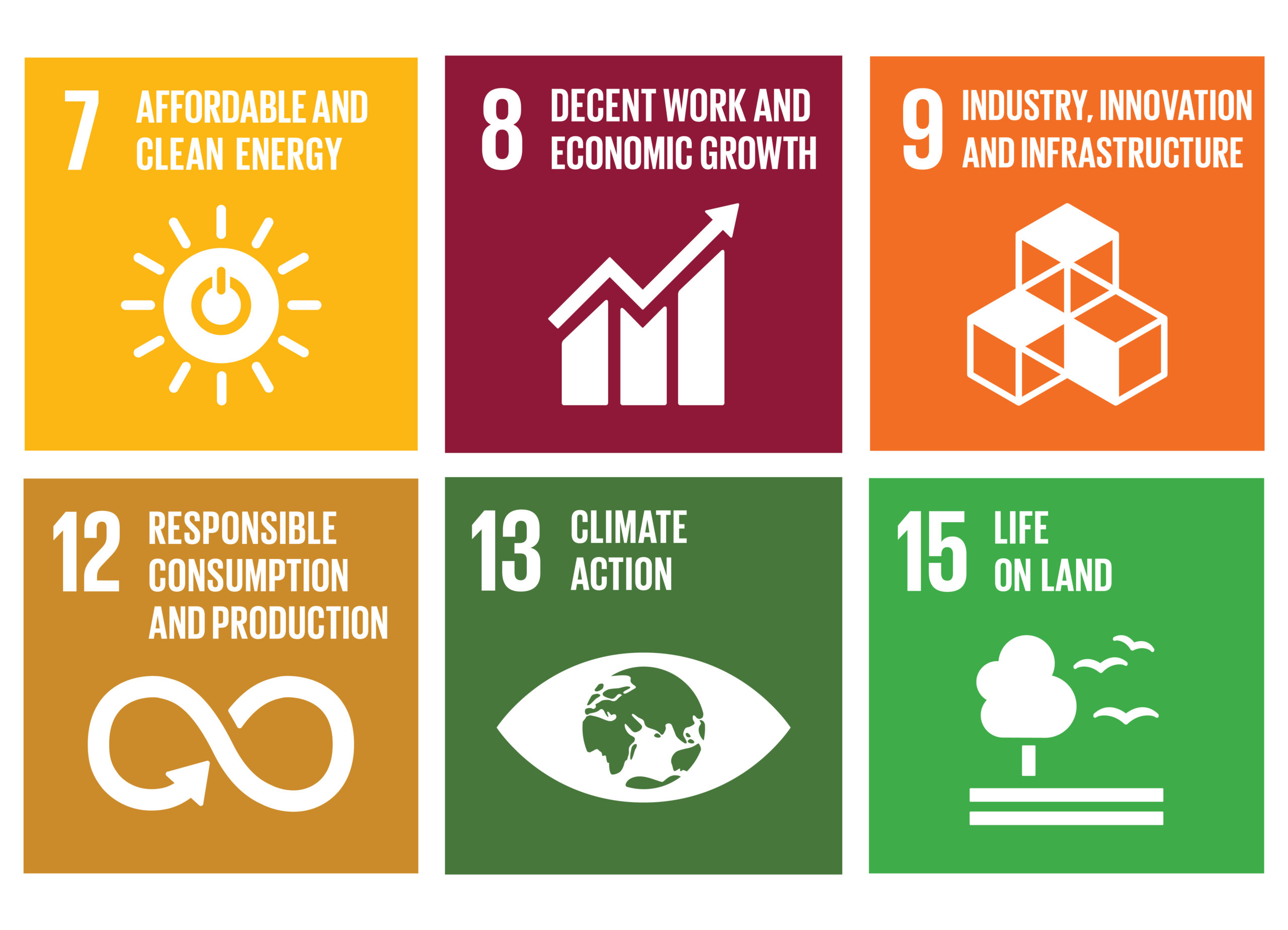Energy and CO2 emissions
Our commitment to reduce emissions
Efficiency

We aim for maximum efficiency: with a certain amount of methane, our cogeneration plants achieve an energy production that is 50% higher than conventional plants. Paper mill operations require a lot of energy, in the form of electricity and heat.
In short, we need both electricity to run the machinery, and steam to dry the paper: indeed, paper production is a process that starts from a slurry made up of 90% water and reaches the final product that contains less than 10%. The company’s internal cogeneration plants supply both types of energy we need.
Since 2009, Favini has deployed a system to analyse and monitor its energy efficiency, showing a commitment to reducing consumption by continuous targeted investments.
A high-performance cogeneration plant has been in operation at the Crusinallo facility since January 2016, efficiently generating all the heat and most of electricity needed for the production process.
This leads to decreased pollutant and greenhouse gas emissions compared to producing heat and electricity separately. The Rossano plant has also been equipped with a state-of-the-art cogeneration engine.
The cogeneration plants decrease our reliance from using other and less efficient external processes with higher CO2 emissions.

A cogeneration plant is a combined heat and power system. The energy source is methane, less polluting than other fossil fuels because during combustion it generates only water and carbon dioxide and not carcinogenic substances, such as harmful hydrocarbons or fine dust.
During the process, the created heat, instead of being dispersed into the environment, is appropriately recovered and used in our factories. The conventional system creates energy and heat separately, using more fuel. We have instead chosen cogeneration plants because of their higher efficiency, which is rewarded by the white certificates TEE (Energy Efficiency Credit).
Self produced electricity

The cogeneration plant was not the only action Favini has undertaken to avoid polluting emissions and improve its performance. By harnessing the power of water from a stream near the factory, the company can take advantage of hydroelectricity.
ENERGY SOURCES

Favini’s path toward energy efficiency involves a constant evaluation of more environmentally responsible energy sources. Wherever possible, the company powers its activities using waterways near its site thanks to two in-house hydroelectric plants.
Favini has also taken into consideration the possibility of using local agricultural waste to create electricity, but unfortunately biomass plants would not generate sufficient energy to fulfil its needs.
The optimisation of methane use – which as of yet cannot be avoided – is the factor underlying the decision to invest in cogeneration plants. Currently, this is still the most efficient solution.
REWARD FOR ENERGY EFFICENCY

Continuous investments in energy efficiency – including the replacement of the paper press and installation of a new heat pump – have allowed Favini to obtain white certificates that were subsequently reinvested in new energy efficiency projects.
CO2 EMISSIONS
Emissions linked to the paper mill’s activities fall primarily into two categories: – some are generated directly by the company’s operations, such as the combustion of methane, a fossil fuel used to power machines and the cogeneration plant; – others are caused indirectly by energy consumption, including the purchase of electricity from the national grid, over which Favini has no control.
Following the GHG Protocol standard, the company monitors and accounts for all emissions associated with its production activities; moreover, through a voluntary agreement with Italy’s Ministry of Ecological Transition, the company has committed to the 2015 Paris Agreement, which requires Countries, companies and individuals to take action to reduce gas emissions greenhouses that alter the climate and damage ecosystems.
CO2 OFFSETTINGS
In conjunction with structural measures, Favini has taken action to tackle CO2eq emissions of processes it does not have direct control over by joining environmental programmes aimed at purchasing carbon credits generated abroad.

Forest protection, Madre de Dios, Peru
The Madre de Dios region is part of the Vilcabamba-Amboró Corridor, one of the areas with the highest biodiversity in the world. In addition to endangered plant and animal species such as the mahogany tree, jaguar, puma, howler monkeys, macaws and boas, several indigenous peoples also live there. However, their valuable habitat is threatened by the construction project of the Transamazônica road through Brazil and Peru.
This encourages immigration into an ecologically vulnerable area, accompanied by the development of farming and livestock activities. The main consequence is massive deforestation. So far, numerous resistances, e.g. from environmental and indigenous groups, have prevented the completion of the Peruvian section.
Since 2009, this project has been protecting an area of 100,000 hectares and helping local communities to manage it sustainably.
How does forest protection help combat global warming?
Forests are not only among the most important carbon reservoirs on the planet, they are also home to a huge variety of species and provide a livelihood for all people. However, the world’s forest areas have decreased dramatically in recent decades due to increased settlement, agricultural use, illegal logging and mining.
Forest protection projects ensure that forests are preserved in the long term and that their protection is considered more valuable than their deforestation. Together with the local population, project participants protect the area from negative influences. To enable this, the projects create alternative sources of income and educational opportunities. Depending on the project region, forests store varying amounts of carbon per hectare. Particularly high amounts of carbon are stored in the vegetation and soil of tropical forests, primary rainforests or mangroves. The forest protection projects in ClimatePartner’s portfolio are registered according to international standards.

The emissions generated by eco-friendly papers Crush, Remake, Refit, Shiro Echo, Tree Free and Alga Carta, part of ‘Paper from our Echosystem’ collection, are fully offset by Carbon Credits that we acquire to finance activities that can absorb CO2 in the atmosphere.
The credits are generated from a CDM project, a United Nations carbon offset scheme.

As a consequence Favini has succeeded in offsetting the environmental impact of several product lines, such as eco paper lines Crush, Remake, Refit, Shiro Echo, Tree Free and Alga Carta, part of our eco collection Paper from our Echosystem.
Our commitment to energy efficiency and emission reduction is in line with the Sustainable Development Goals by United Nations. In particular, our approach in this area respects the principles:
- 7 clean and accessible energy;
- 8 decent work and economic growth;
- 9 support for innovation;
- 12 promotion of sustainable models;
- 13 fight against climate change;
- 15 life on land.
Explore our Sustainability areas to discover all the SDGs pursued by Favini.

COURAGE TO






